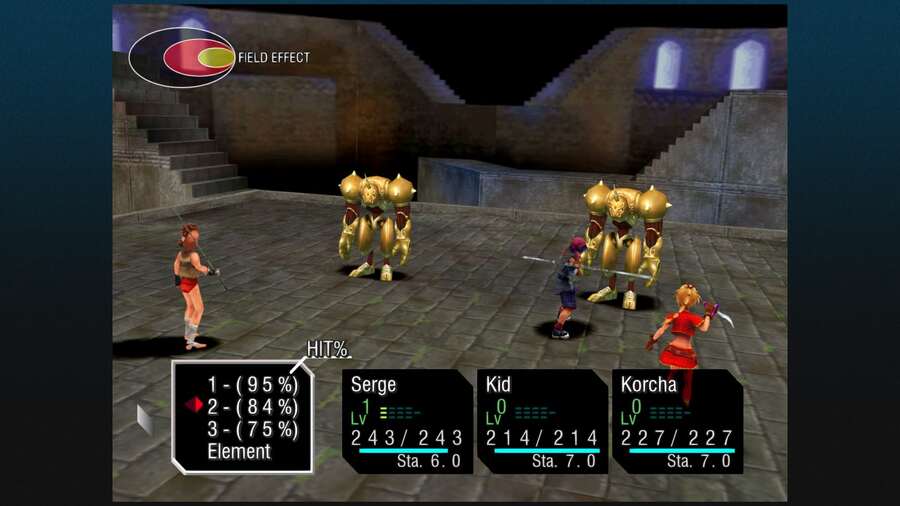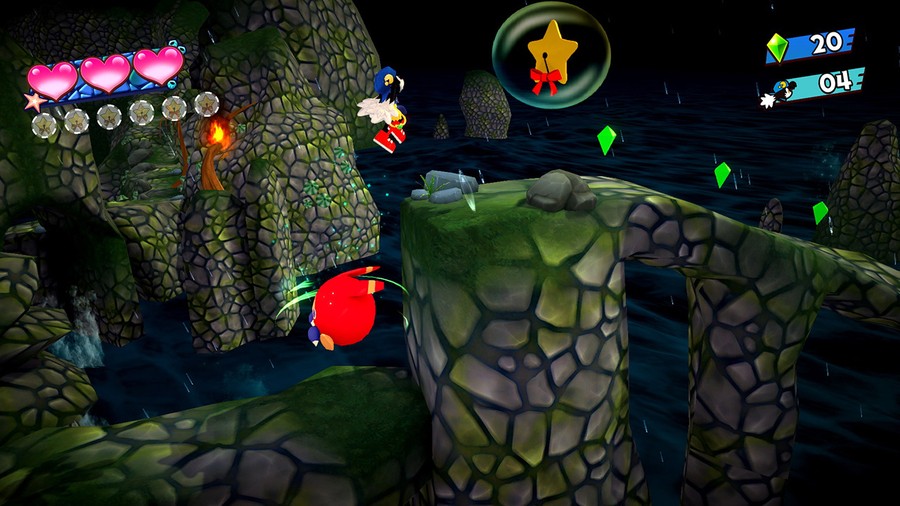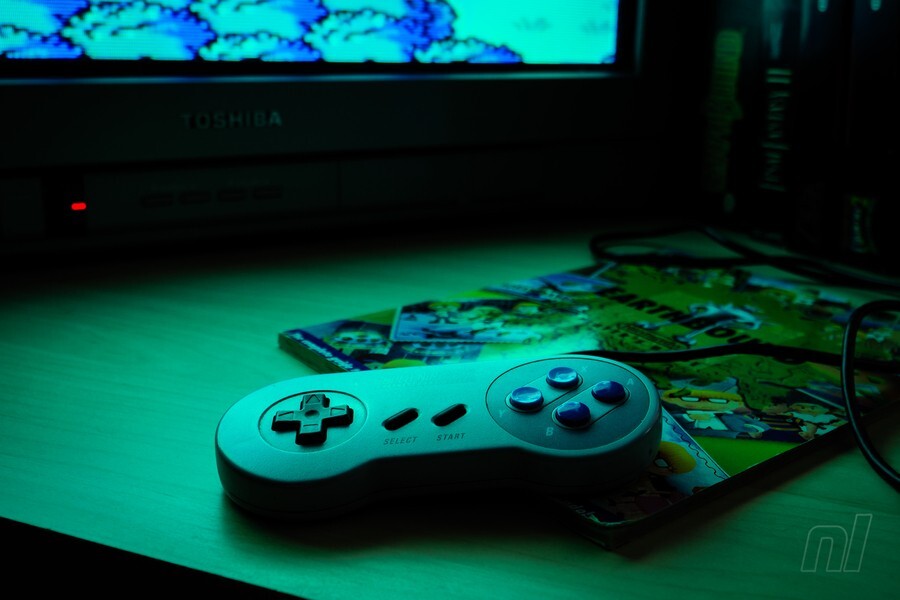Products You May Like

Remasters are fantastic, but they’re also a little bit weird. They give us the chance to revisit some of our favourite games from our childhood, give new players the opportunity to share in our experiences, and sometimes they represent the first time a game is getting an international release. But why are they so inconsistent?
It’s worth laying out that we’re looking solely at remasters — games that have been polished up and given some TLC (hopefully) — rather than remakes, which involve rewriting the entire game code to recreate or act as a reimagining of the games we grew up with (So no Live A Live or Link’s Awakening, here).
Yesterday, Chrono Cross: The Radical Dreamers Edition — a remaster (and package) of the PS1 follow-up to Chrono Trigger — got an update which came with “framerate improvements”, almost a whole year after the remaster came out. Many reviews (including our own verdict) pointed out that the game struggled to run at a steady frame rate, and Digital Foundry’s analysis concluded that the game actually ran worse that the PS1 version from 2000.
Post-patch, though, it’s like night and day. At least on Switch from the time I’ve spent with it, the game runs much more consistently, aiming for 60fps in combat and hitting that most of the time. On the field, it’s capped at 30fps, but from what we’ve seen, it doesn’t even drop below that in busy areas like Termina and Arni. There are still some niggles — pre-rendered backdrops still look a bit blurry, and the CG cutscenes are grainy, but my goodness, what a difference consistent frame rate makes. This, probably, makes The Radical Dreamers Edition the way to play Chrono Cross in 2023.
But should we have had to wait for nearly a year to get an experience “closer” to the original game?

A new audience, another chance
Oftentimes, a remaster’s primary goal feels like it’s to bring a polished-up version of someone’s favourite game to modern consoles. These come in all sorts of shapes and sizes, too. Some just give the visuals a polish and improve the controls like Zelda: Skyward Sword HD. Others seemingly rebuild the game’s visuals from the ground up, like Metroid Prime Remastered or Xenoblade Chronicles: Definitive Edition. Many come with quality-of-life improvements, too — lots of older RPGs have a fast-forward and skip random encounters functions added, for example, while platformers might let you keep all of your collectibles if you happen to die in a level.
Post-patch, Chrono Cross is like night and day…the game runs much more consistently, aiming for 60fps in combat and hitting that most of the time
But improved availability is always a huge reason for these things — making games that people missed out on available to a wider audience — and we love that. The problem is, there’s usually a caveat or three with a remaster, especially for those who grew up playing the original game.
Metroid Prime Remastered is maybe the best recent example of a remaster on the Switch — it’s pretty much universally adored by fans of the original and the Wii version, and multiple control schemes from the previous versions have been catered to as much as possible. Plus it looks bloomin’ gorgeous and runs like a dream. Pats on the back all around (although the credits situation needs looking at).
Devil May Cry 3 Special Edition on Switch, an HD version of the PS2 classic, is also perhaps the best version of the game. Though it’s technically a port of a remaster, the additional content added to the Switch version gives it the edge. On the Switch only, you can swap between combat styles at any time — similar to Devil May Cry 4 and 5. And again, it runs really well on Nintendo’s hybrid.
The same, but better?
These are examples of remasters that fit the phrases “this game looks just as I imagined it did 20 years ago” or “this is better than I remember it”. A hard feat to achieve because, for most of us, our tastes change, our time is more valuable, and our patience might be wearing a little thinner. Those hazy summer holidays of us clutching our controllers, sitting on the floor, and staring up at our CRT screens were part of the charm — but we grow older, we get jobs, and have less free time to spend on things. We just want a little shot of that juicy nostalgia.
surely it’s not too much to ask that a treasured 20- or 30-year-old favourite runs at least as well as it did on original hardware
A remaster should be an opportunity to give us the very games we loved growing up as we remember them, or better, but that’s not often the case for a variety of reasons. Sometimes, those reasons will be out of the control of the developers. Business realities and tight budgets will restrict the scope of many a remaster project. But surely it’s not too much to ask that a treasured 20- or 30-year-old favourite runs at least as well as it did on original hardware.
Yet for every DMC3 or Metroid Prime, we have a Tales of Symphonia Remastered, a game that ran at 60fps on GameCube, runs at 30fps max on Switch, and can barely maintain 15fps in some of the desert areas. The remaster isn’t based on the GameCube version — it’s based on the PS3 and Steam rerelease, Tales of Symphonia Chronicles, which in turn is based on the 2004 Japanese-exclusive PS2 rerelease (it’s never been confirmed, but it’s believed the source code for the GameCube version has been lost). That PS2 version ran at 30fps. Plus Remastered doesn’t include the sequel, Dawn of the New World, which is part of Chronicles. The Switch version is also more expensive.
There are myriad issues with the Switch version in particular, like black backdrops where they were previously either colour or see-through. Battle transitions are now just a white screen rather than shattering glass. And the black outline around all of the characters in the original release isn’t there, but it is pretty visible on characters’ weapons and armour in cutscenes. Good Vibes Gaming has done a pretty detailed breakdown of many of the issues, and it really highlights just how sloppy this remaster in particular feels.
This is the first time Symphonia has returned to a Nintendo system since the game’s original release 20 years ago — is that really what fans, old and new, deserve?
Downwardly mobile
One of the biggest bones of contention for many comes from the number of mobile ports and remasters we’ve seen over the years, many of these of some of our favourite Super Nintendo games. Chrono Trigger‘s mobile rerelease served as the basis for the Steam version (which, ahem, still isn’t on Switch), and when it initially launched, it was torn apart by fans for a number of reasons. It was a straight-up port, meaning there was a weird smoothing filter over the visuals, and you could see artifact aliasing around the character sprites, and the menu UI and font was also poorly matched and generic, among many other issues. Square Enix has patched all of this out now, but some still consider the Steam version inferior to the original 28-year-old SNES release.
Picking on Square Enix again (we promise it’s not personal), before the Pixel Remasters were a thing, the Final Fantasy mobile releases of V and VI drew attention for all of the wrong reasons. These were based on the GBA version (with the SNES music) and added a journal, auto-battle, auto-saves, and a hint system. But visually… well, just look.
The new sprites were controversial, to say the least, and this was just one of the many mobile-to-Steam ports that had a ton of mods created for it to revert a lot of the assets back to the original SNES versions. It’s odd because the mobile versions of the Dragon Quest games were generally well-received. Luckily, the Pixel Remasters versions replaced those on mobile and Steam, and they’re coming to Switch this year. But these are embroiled in a completely different pile of controversies.
Remasters do give the chance for underloved, underappreciated games to shine
For one, there’s a debate around whether these are the definitive editions — only Final Fantasy III might get away with this, as the 3D version on DS is a remake and the 2D version hasn’t been released in the West otherwise. But every other Pixel Remaster — I, II, IV, V, and VI — has at least one or two other versions that include new quests, jobs, and other content that isn’t included in the Pixel Remaster version. And of course, there’s that font — though rumours seem to suggest that might be getting updated for the console release.
Cash grabs
The Pixel Remasters also treads some murky waters, like many other remasters and rereleases — cashing in on nostalgia. The Collector’s Edition and Square Enix Store exclusive physical release sold out within minutes and restocks have been few and far between (though PlayAsia is stocking the Asian release which includes English subtitles). But for a physical version — and a Collector’s Edition — the price is a little eye-watering.
Remasters, though, do give the chance for underloved, underappreciated games to shine. You only have to look at February 2023’s Nintendo Direct to see a handful of weird, wonderful games previously trapped on older Nintendo consoles, all getting the remaster treatment (on top of Samus’ own return to Tallon IV). Baten Kaitos I & II HD Remaster, Ghost Trick: Phantom Detective, and the first three Etrian Odyssey games are all making the jump, but again, each of them has a slightly different chink in its armour.
How much, then, is it worth sacrificing for the ease of accessibility? It’s universally agreed that Baten Kaitos‘ English dub is not very good, but Origins‘ pretty great English VO is also being sacrificed. It’s worth stressing that the Japanese dub is excellent, but the choice to swap between the English and Japanese dub would’ve been nice.
In Etrian Odyssey Origins Collection‘s case, the price of entry is £71.99 for all three, or £35.99 each if you want to buy the three games separately. Also, these HD rereleases are based on the DS games and not the respective remakes/reimaginings of 1 and 2 on the 3DS.
Guilt trips
There’s also an element of guilt that companies frequently bring into play when remastering these kinds of games. Back when Klonoa Phantasy Reverie Series came out, producer Ryo Oshida said, “if this remastered version is loved by the community, there might be opportunities to further expand the Klonoa IP and do other remasters of other titles as well.”
Fortunately, Klonoa’s rerelease turned out to be very good, However, Bandai Namco has also done this with the Tales series, saying it will “await [fan] suggestions” and focus on whatever success the current remaster (Symphonia) brings. Regardless, it makes us feel like we have to buy something — sometimes a game or a product that isn’t how we remember and deserves far better than the barebones treatment it gets — otherwise that IP will go back in the vault, with players taking the boardroom blame for their apparent lack of interest.
Companies routinely state that ‘demand’ will dictate decisions surrounding platform and project announcements, putting the onus on fans to demonstrate their devotion by putting money down for a sub-par product and crossing their fingers that patches will come. Could Square really not determine on its own that there would be extreme interest in the Pixel Remasters from console gamers? It’s Final Fantasy, for goodness’ sake.

Nostalgia trips
The excitement that remasters generate, however, is always a joy. The Metroid Prime Remastered shadow-drop is enough of an example, but I remember just how thrilled people were to see Chrono Cross finally get an official release in Europe back in 2022, and with Radical Dreamers! But then many played it and felt a little bit let down. Post-patch, this may now be the definitive way to play Chrono Cross, but for some, it might be too little too late.
It’s a strange balancing act. Video games are a wonderful way to share experiences, whether it’s telling people your favourites or just discussing the things you love about them. Some elements won’t have aged well, and everyone has different tolerances (tank controls don’t always hold up nowadays, and who wants random encounters every two seconds?), but that’s exactly the sort of thing that remasters can tweak. We want more people to play the games we love, and it’s always fantastic to see games become more accessible, but convenience isn’t worth a compromised version that’s measurably worse than the original.
It’s great when publishers and developers do listen to fans’ concerns and act on them, and we also know that remastering and porting older video games isn’t easy. From lost source codes to consoles that are straight-up hard to even emulate, it might be impossible to achieve dream remasters the way we want them every single time. Chrono Cross, at least, is now much closer to where it should’ve been about a year ago, and hopefully this patch will wash away the scars of time of The Radical Dreamers Edition’s rocky launch.

I just wish that more publishers had the common sense to realise when ‘good enough’ simply isn’t.
So, we’ve had our say on remasters and rereleases — what’s your take on the topic? Vote in our polls below to let us know and then get nattering in the comments.
Please note that some external links on this page are affiliate links, which means if you click them and make a purchase we may receive a small percentage of the sale. Please read our FTC Disclosure for more information.
